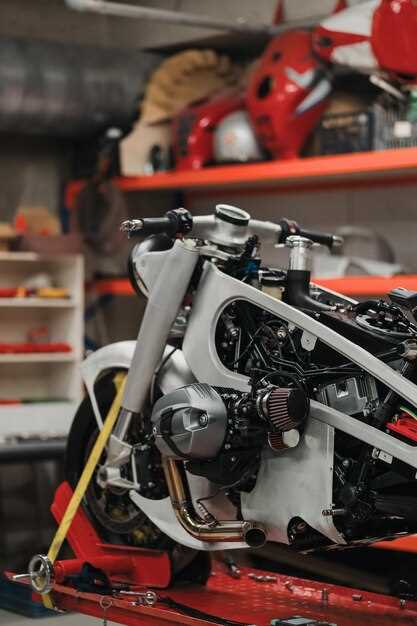
In the world of motorcycle racing, having the right bike can mean the difference between victory and defeat. Factory-built racing motorcycles are engineered with precision, offering unparalleled performance and handling straight out of the showroom. These machines are designed to excel on the track, embodying the perfect balance of power, agility, and stability.
In this article, we will explore the top five race ready motorcycles that come straight from the factory, each offering features specifically tailored for competitive racing. These bikes not only meet the demands of professional riders but also cater to enthusiasts looking for a piece of the adrenaline-fueled action that the racing world provides.
From lightweight frames to advanced suspension systems, these motorcycles represent the pinnacle of track performance. Their cutting-edge technology and design philosophies allow riders to push limits and achieve high speeds with confidence. Join us as we dive into the details of these exceptional race machines to see which one deserves a spot in your garage.
Analyzing the Performance Features of Top Superbike Models
When it comes to racing, the performance features of superbikes play a crucial role in defining their capabilities on the track. Each top model brings a unique set of specifications that cater to riders seeking high-speed thrills and precision handling.
Engine Power and Torque: The heart of any superbike lies in its engine configuration. High-displacement inline-fours and V-twins dominate the market, offering exceptional horsepower often exceeding 200 hp. This power translates into rapid acceleration and impressive top speeds, making these bikes formidable on any racing circuit.
Weight and Handling: Weight distribution is another critical factor that affects a bike’s overall performance. Leading superbikes utilize lightweight materials, such as aluminum and carbon fiber, to reduce weight while maintaining structural integrity. This reduction enhances agility, allowing riders to navigate turns with precision and confidence.
Electronics and Rider Aids: Modern superbikes are equipped with advanced electronics that enhance performance. Features like traction control, anti-lock braking systems (ABS), and quick shifters provide riders with better control during extreme riding conditions. These technologies improve safety while maximizing the bike’s performance potential.
Suspension Systems: Superior suspension systems are fundamental in absorbing shock and maintaining stability at high speeds. Top models often come with fully adjustable front and rear suspensions, allowing riders to customize their settings based on personal preferences and track conditions. This adaptability can significantly impact lap times and overall ride comfort.
Braking Systems: The ability to stop efficiently is as vital as acceleration. High-performance superbikes feature advanced braking technologies, including radial-mounted calipers and high-friction brake pads. These systems provide exceptional stopping power, ensuring that riders can maintain control in critical situations.
In conclusion, the combination of engine performance, weight efficiency, cutting-edge electronics, and sophisticated components ensures that top superbike models not only meet but exceed the expectations of performance-driven riders on race tracks worldwide.
Understanding the Differences Between Track and Street Ready Motorcycles

When it comes to motorcycles, the distinctions between track-ready and street-ready bikes are crucial for enthusiasts and racers alike. Superbikes, designed specifically for the racetrack, offer unparalleled performance but come with unique characteristics that set them apart from their street-legal counterparts.
Track-ready motorcycles prioritize speed, agility, and handling. These bikes feature lightweight frames and advanced suspension systems, allowing for superior cornering abilities and high-speed stability. The aggressive geometry of a track bike enhances its performance on closed circuits, making it less suited for everyday use.
In contrast, street-ready motorcycles are built for versatility and comfort. They maintain a balance between performance and practicality, incorporating features such as a more relaxed riding position, enhanced visibility, and additional safety equipment for daily riding. Furthermore, these motorcycles typically have exhaust systems that comply with noise regulations, unlike the more aggressive setups of track models.
Another key difference lies in tires and brakes. Track bikes use specialized rubber designed for grip on smooth pavement, providing optimal traction during races. Street motorcycles, however, must accommodate a variety of road conditions and are equipped with tires that offer durability and performance in diverse environments. Similarly, the braking systems on track bikes are optimized for quick stops at high speeds, often featuring advanced materials and designs that enhance cooling and reduce fade under intense use.
Ultimately, choosing between a track-ready superbike and a street-ready motorcycle depends on the rider’s needs and intended use. Understanding these differences is essential for making an informed decision that aligns with one’s riding goals.
Evaluating Maintenance and Upgrades for Race-Ready Bikes

When it comes to race-ready motorcycles, proper maintenance is crucial for maximizing performance on the track. Regular checks and services ensure that your bike remains in optimal condition, allowing for faster lap times and enhanced handling. Key areas to focus on include the engine, brakes, tires, and suspension components.
Engine maintenance involves changing the oil frequently and ensuring that air filters are clean. A well-maintained engine runs smoother and produces better power output, crucial for competing effectively. Additionally, consider aftermarket upgrades like performance exhaust systems or ECU remapping to boost horsepower without compromising reliability.
Braking systems are another critical aspect. Upgrading to high-performance brake pads and discs can significantly improve stopping power, which is essential for navigating tight turns on the track. Regularly inspect brake fluid levels and replace them as needed to maintain optimal performance.
Tires are the only contact point between the bike and the track surface. Regularly checking tire pressure and tread wear is vital for safe and effective racing. Consider investing in high-performance tires designed for track use, as they offer better grip and stability under racing conditions.
Suspension can dramatically affect the handling and comfort of a race bike. Upgrading to adjustable suspension components enables riders to tailor the bike’s setup to their specific needs on the track. Regular maintenance, including checking for leaks and adjusting settings based on track conditions, ensures that you maintain the best possible ride quality.
In summary, maintaining and upgrading your race-ready bike is essential for success in competitive environments. Investing time and resources into upkeep and performance enhancements not only extends the life of your motorcycle but also improves your overall racing experience.
